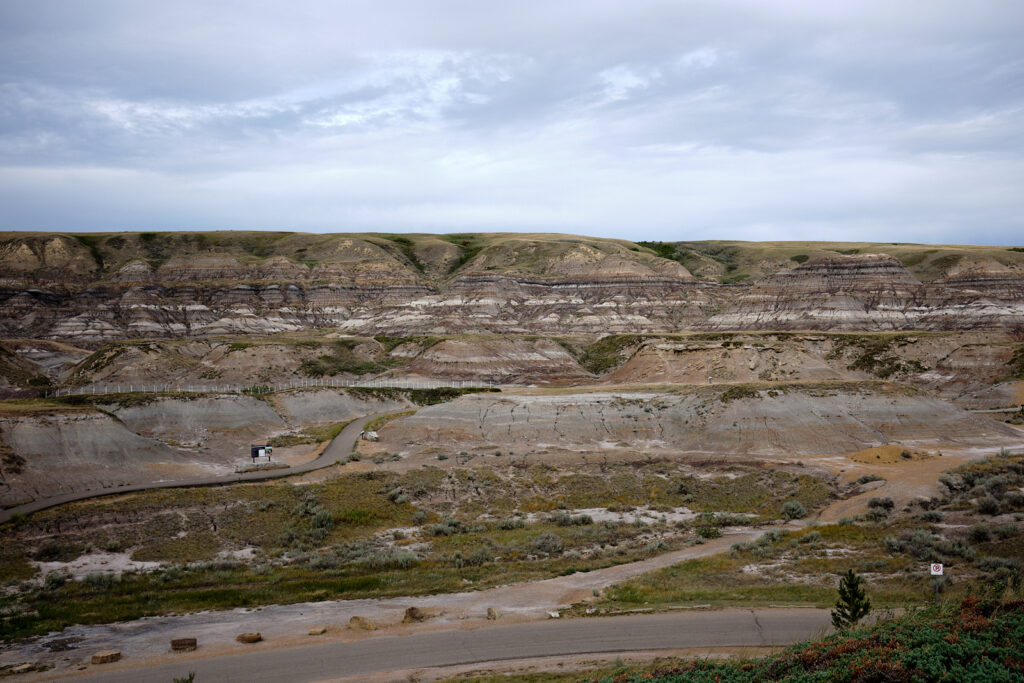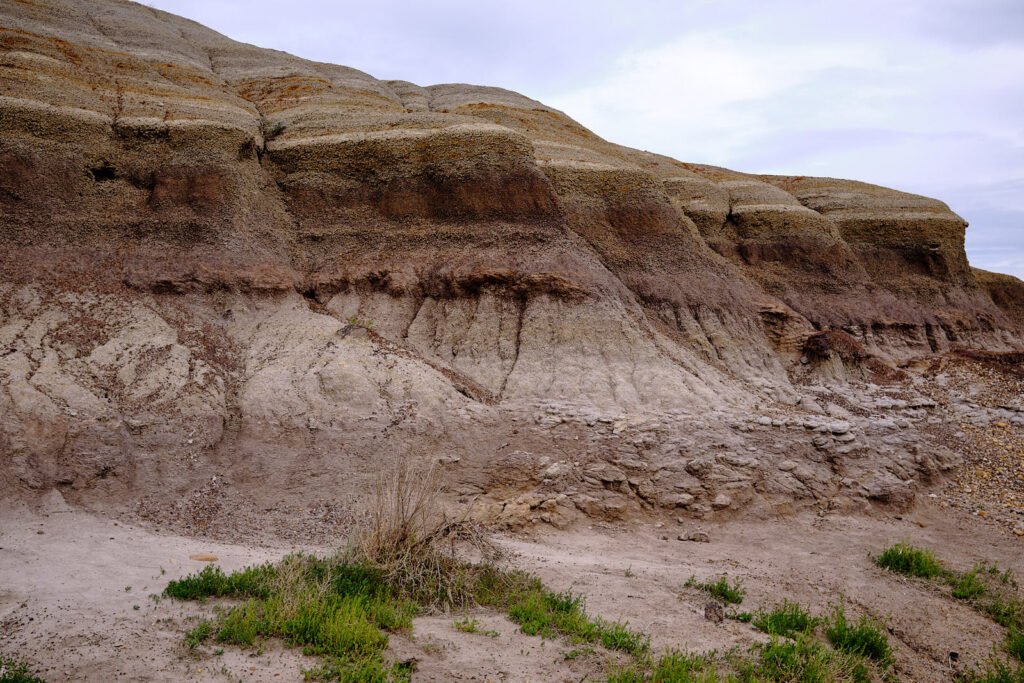Today was about the Royal Tyrrell Museum, a fabulous museum dedicated to fossils and the history of life on planet Earth. If you are in the area, make sure to visit!
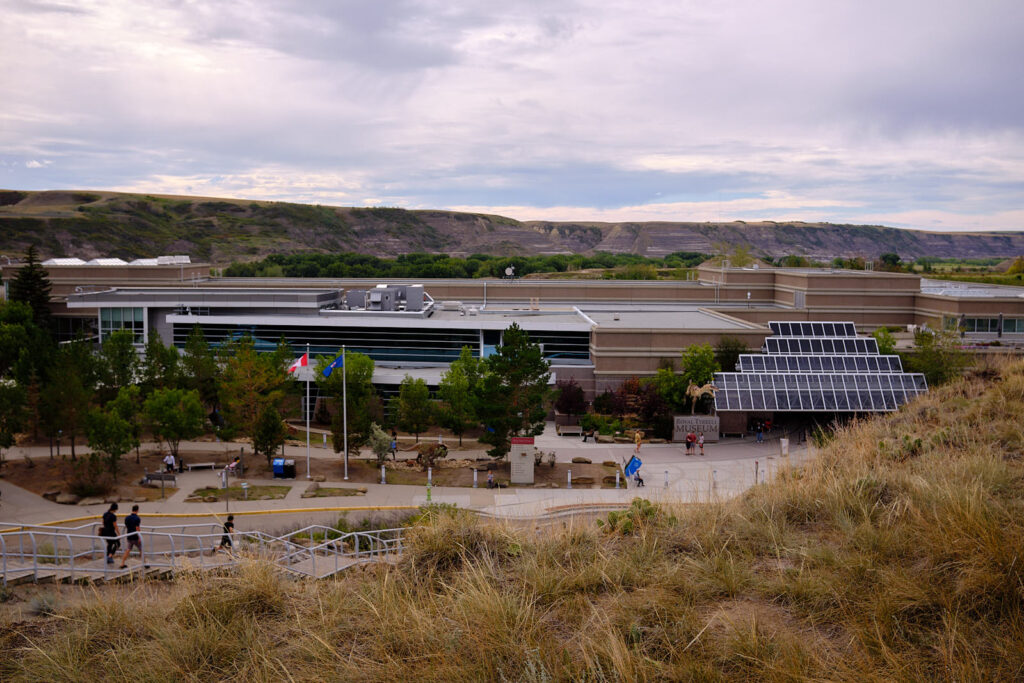
The museum has lots to take in – more than we could absorb in one visit. It showed the development of life over many millions of years. Alberta is very rich in well preserved fossils from many of the time periods.
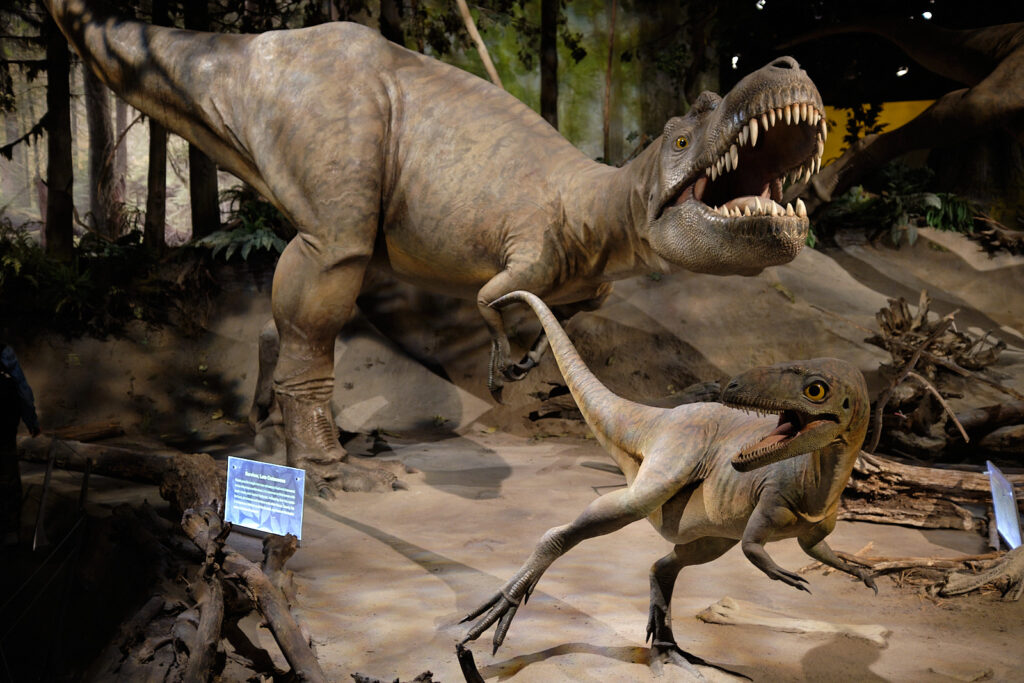
Scientists work tirelessly cleaning, identifying and preserving fossils that are discovered, many by construction and mining companies. An Alberta law requires that a palaeontologist examine any fossil found and larger construction and mining companies are even required to have one on staff.
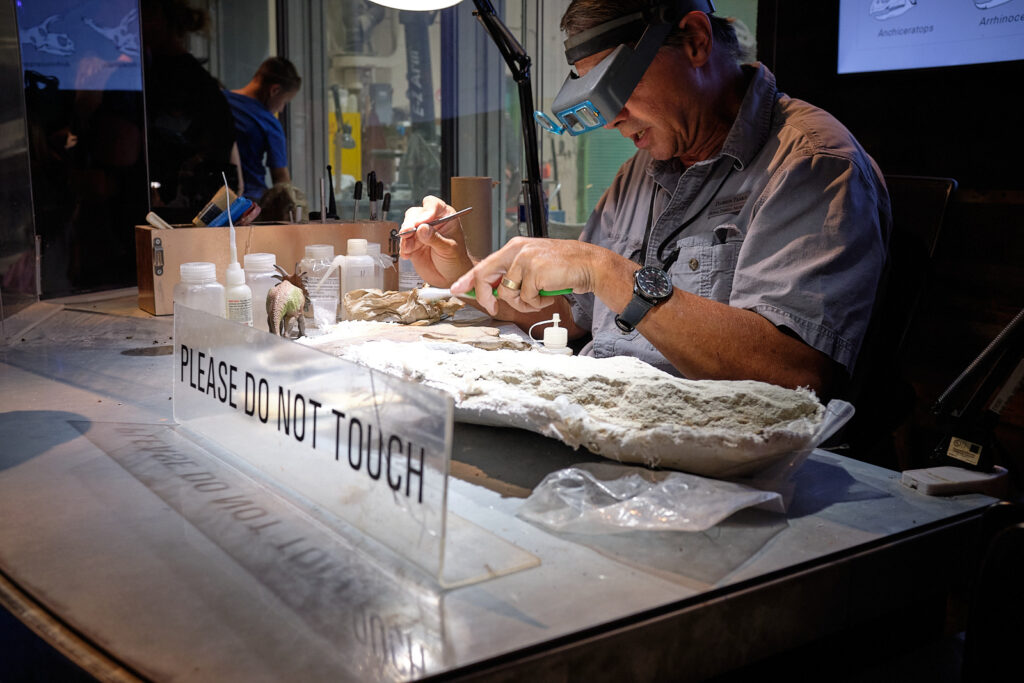
Tetrapod are jawed vertebrates with two pairs of limbs with digits (fingers and toes). They include amphibians, reptiles, birds and mammals – even you! The body plan is successful, adaptable and has allowed tetrapods to thrive on land and in the water for the past 385 million years. This particular creature is a Tiktaalik and is one of a species of tetrapod-like fish from the later part of the Devonian Period. These transitional fossils had both internal gills and rudimentary lungs that allow them to survive equally well in oxygen-rich and oxygen-poor waters.
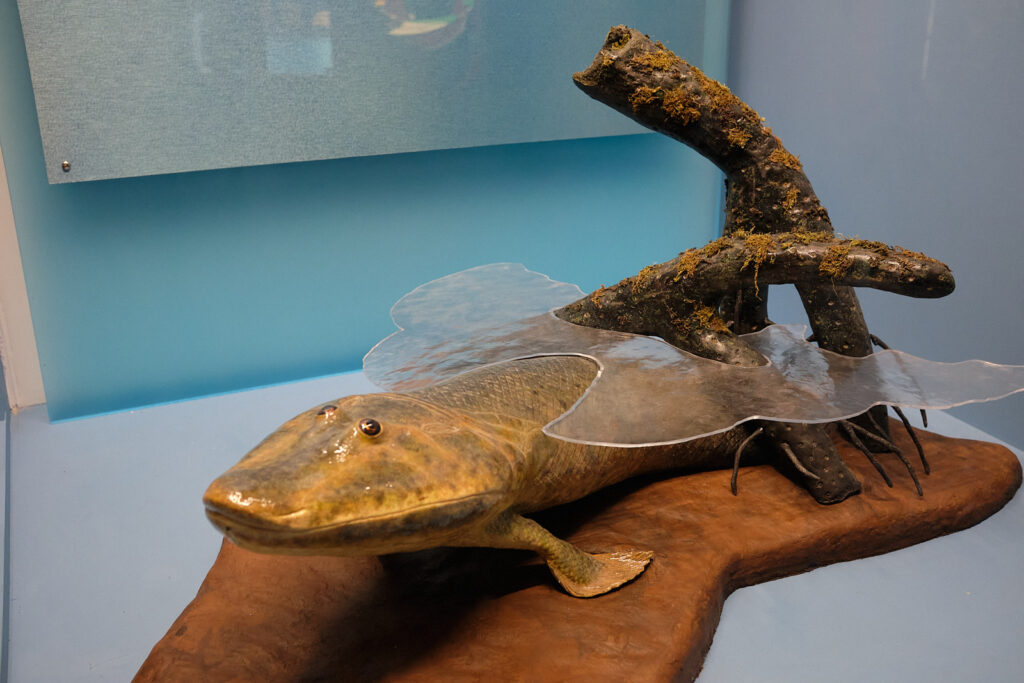
The Dimetrodon were spiky and loved basking in the sun. It is possible that their sails were used for display to attract mates or to discourage competitors.
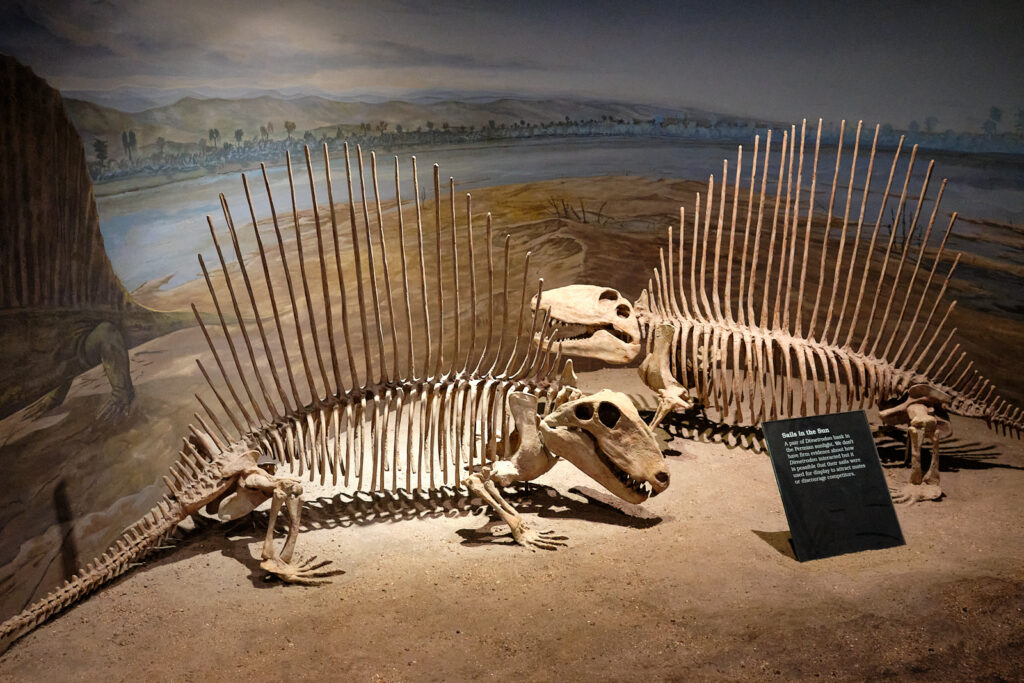
Drumheller is located in the Canadian Badlands and has an impressive display of rock formations, canyons and hoodoos. These were formed by the effects of erosion caused by water, wind and frost.
